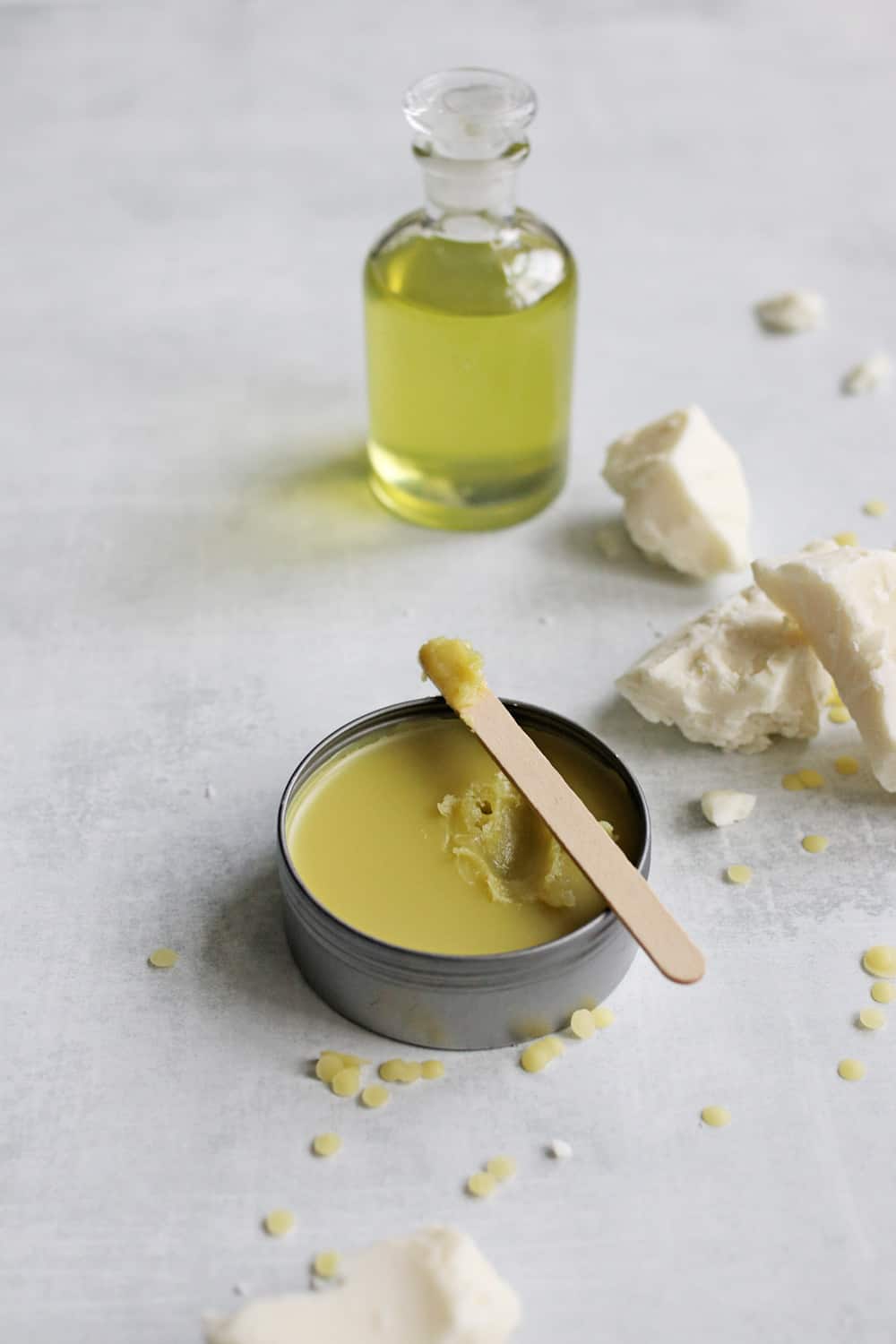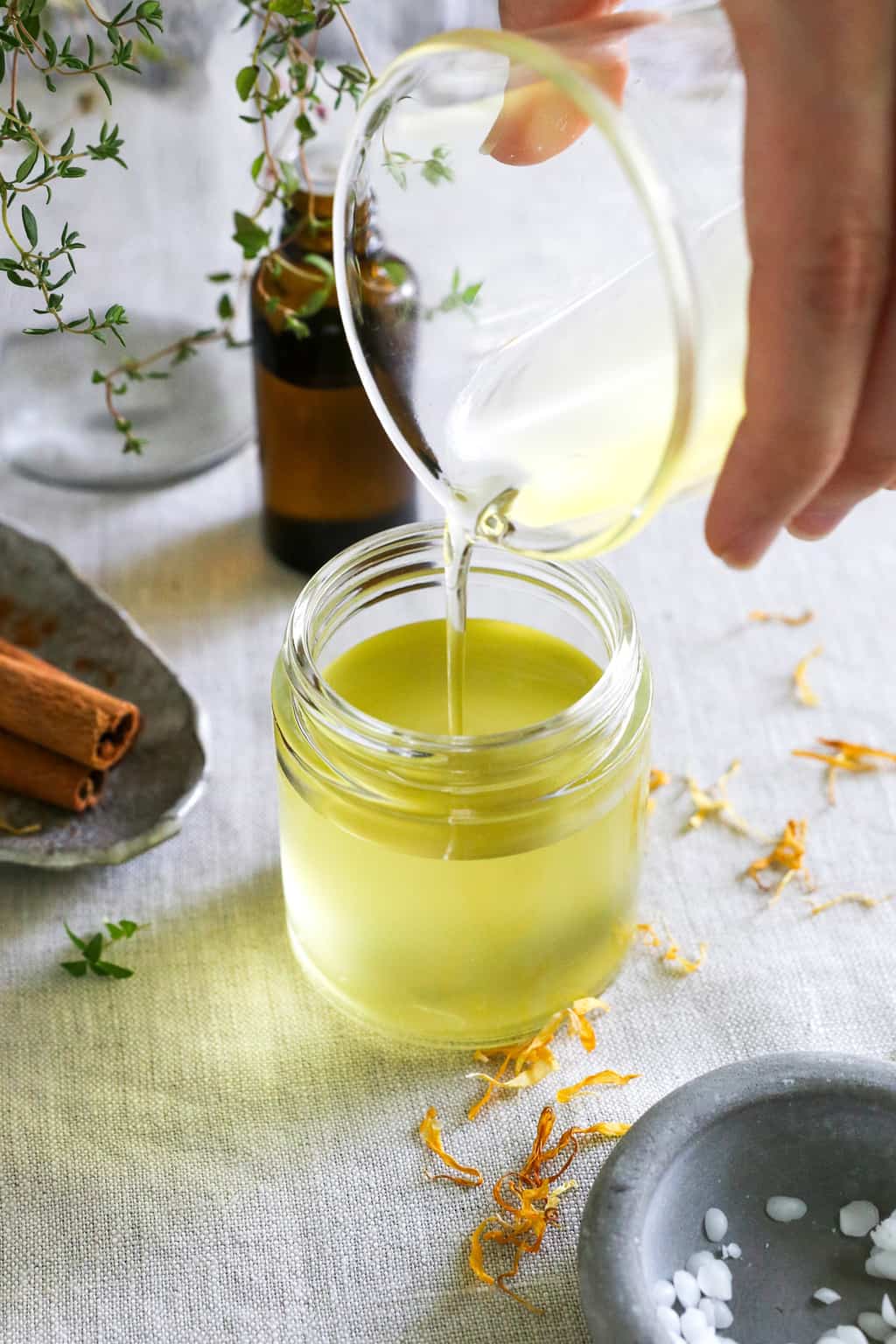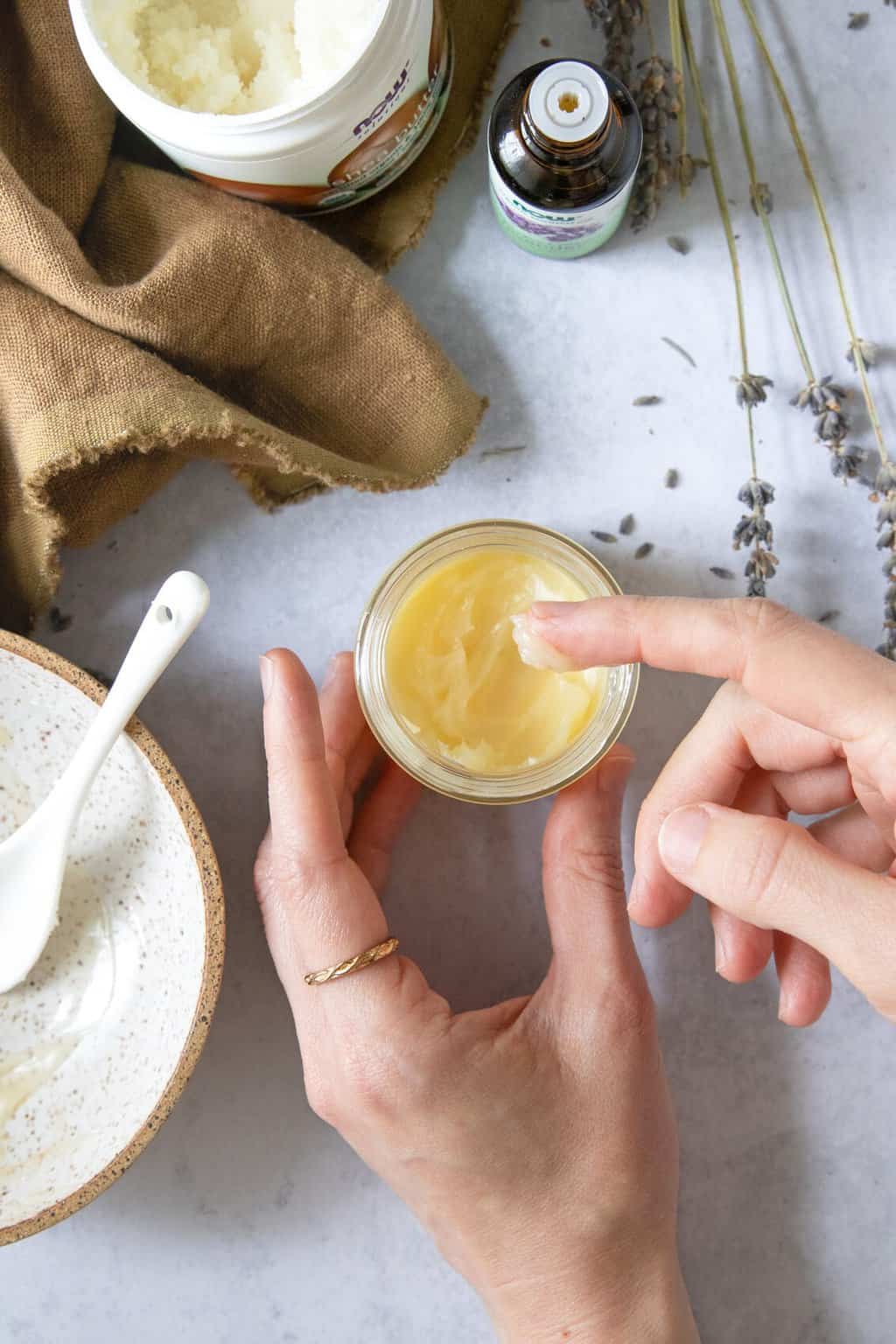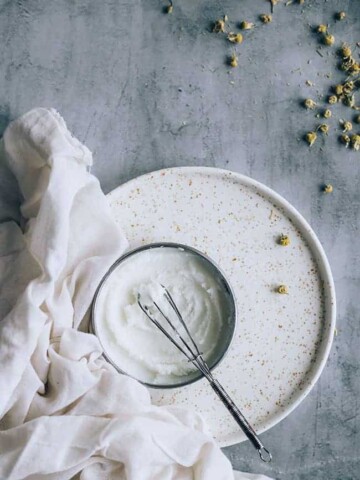I struggle with dry, irritated skin pretty much year-round, and trust me, oat milk lotion is a lifesaver. With nourishing essential oils, protective fats, and soothing oat milk, this recipe moisturizes and calms itchy skin better than anything else I’ve found. Read on to learn how to make this homemade version of Lush’s Dream Cream. You’ll be so glad you did!

We love a good copycat Lush recipe, and this sensitive skin soother is a dream for dry skin. I love body butter and lotion bars, but when it comes to moisturizing head to toe, homemade body lotion can’t be beat.
This oat lotion hydrates without feeling greasy and soothes irritated skin. It's perfect after a soothing soak with an oatmeal bath bomb.
Jump to:
How to Make Oatmeal Lotion
I used to think homemade lotion was hard to make. Lotion bars and body butters only use oils and waxes, but lotion has a thinner consistency and typically uses a liquid.
And oil and water don’t mix, right?
Well, when it comes to lotion, that’s actually not true. Water-based ingredients will bind to oils and butters with the help of emulsifying wax.
The secret? Warm your ingredients so they’re all the same temperature, then combine them. Place the melted ingredients in a bowl and blend together using a hand mixer or immersion blender. We’ve even done this in a blender!
As the mixture cools, it will create what’s called an emulsion—lotion!
Ingredients
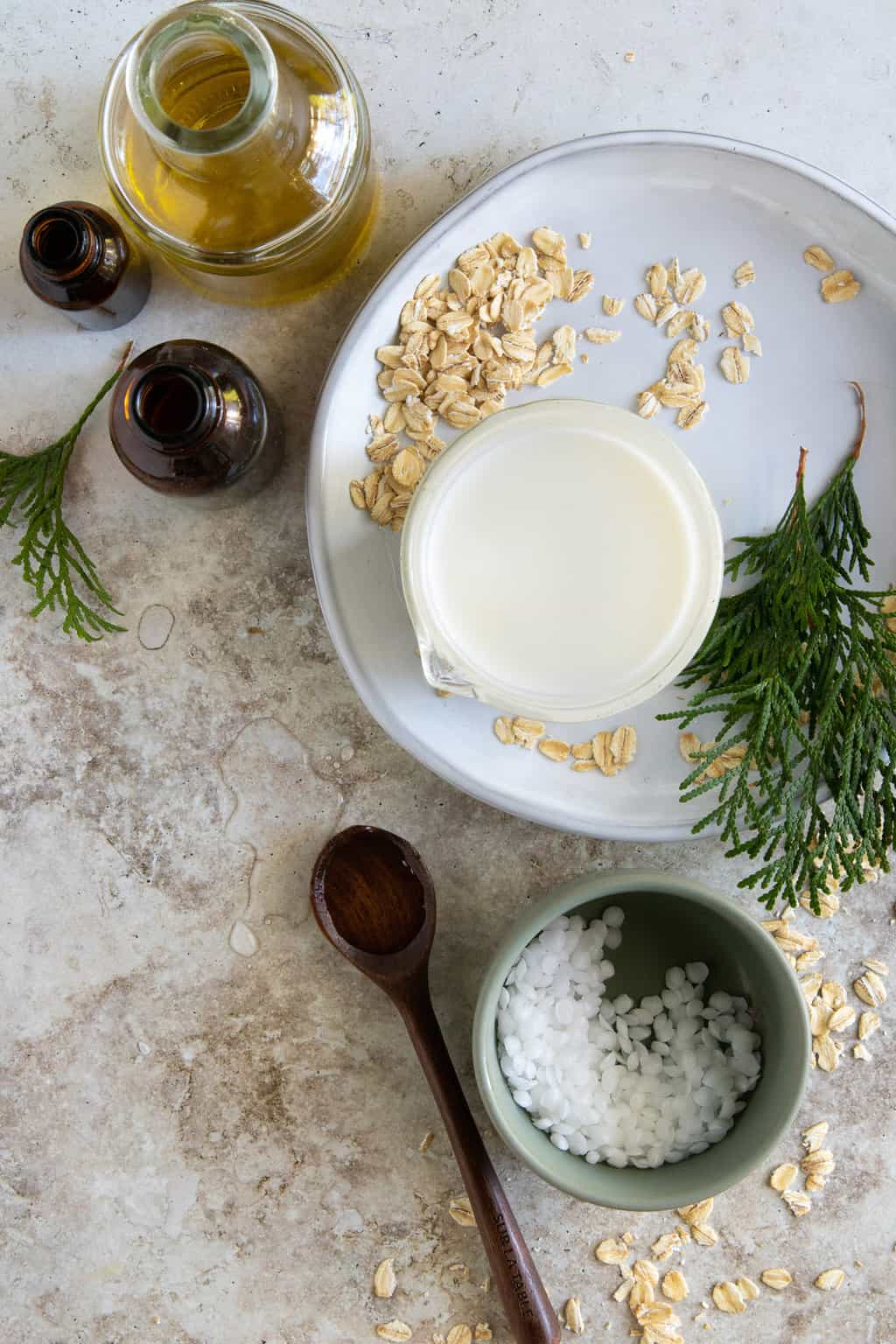
Don’t skip the emulsifying wax or preservative in this recipe—they’re both necessary for a smooth, long-lasting lotion. Everything else is optional.
- ¼ cup olive oil
- 1 tablespoon emulsifying wax
- ½ cup oat milk
- 1 teaspoon vegetable glycerin
- 24 drops frankincense essential oil
- 17 drops Roman chamomile essential oil
- 9 drops pine essential oil
- 1 teaspoon Leucidal Liquid SF preservative
Why Oat Milk?
I’m a huge fan of oat milk, which is simply oatmeal that’s been ground into a fine powder and mixed with water (otherwise known as colloidal oats). Just like with a soothing oatmeal bath, the oats in the lotion bind to skin and lock in moisture, allowing your skin to repair itself.
You can make your own oat milk by combining a tablespoon of ground/colloidal oats in water or use any brand of plain, unsweetened oat milk.
Instructions
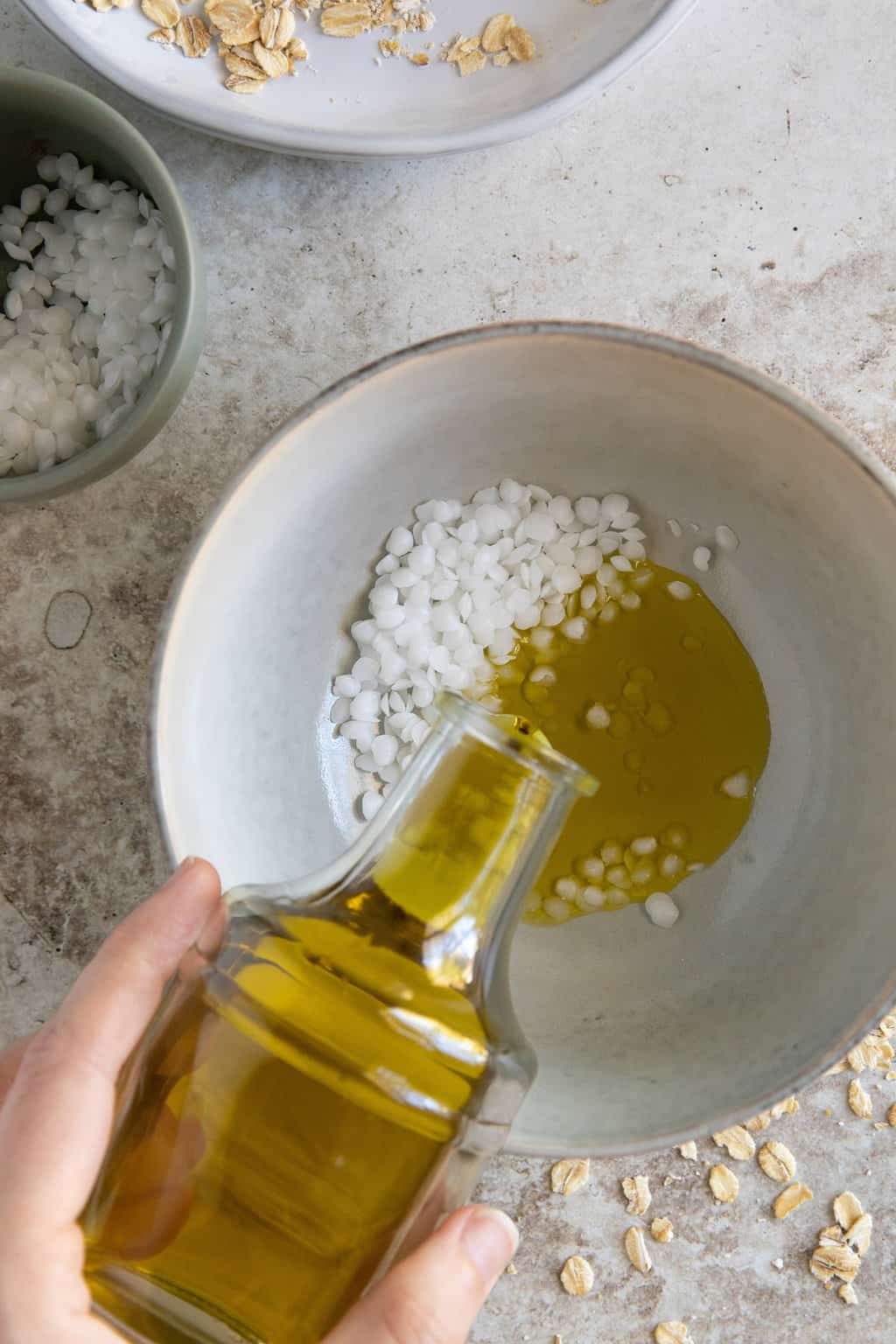
Step 1 | Combine oil and wax
Combine the olive oil and emulsifying wax in a heat-proof container. Microwave in 15-second increments until just melted. If it comes out hot, let it cool for 2–3 minutes before moving on to the next step.
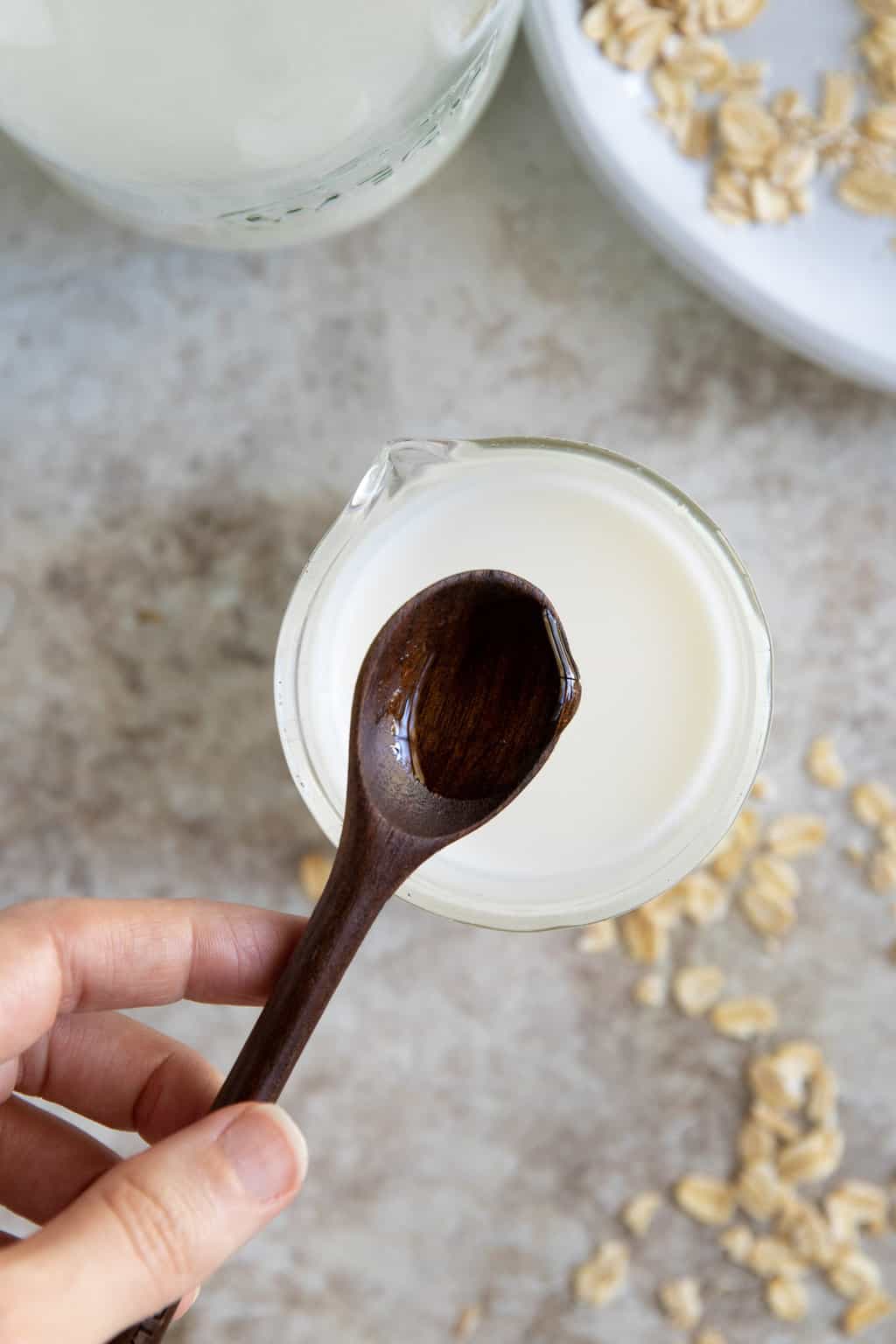
Step 2 | Combine oat milk and glycerin
Combine the oat milk and glycerin in a separate heat-proof container. Microwave for 30–45 seconds until warm to the touch but not hot.
Pour the oat milk mixture into the olive oil mixture in a large bowl.
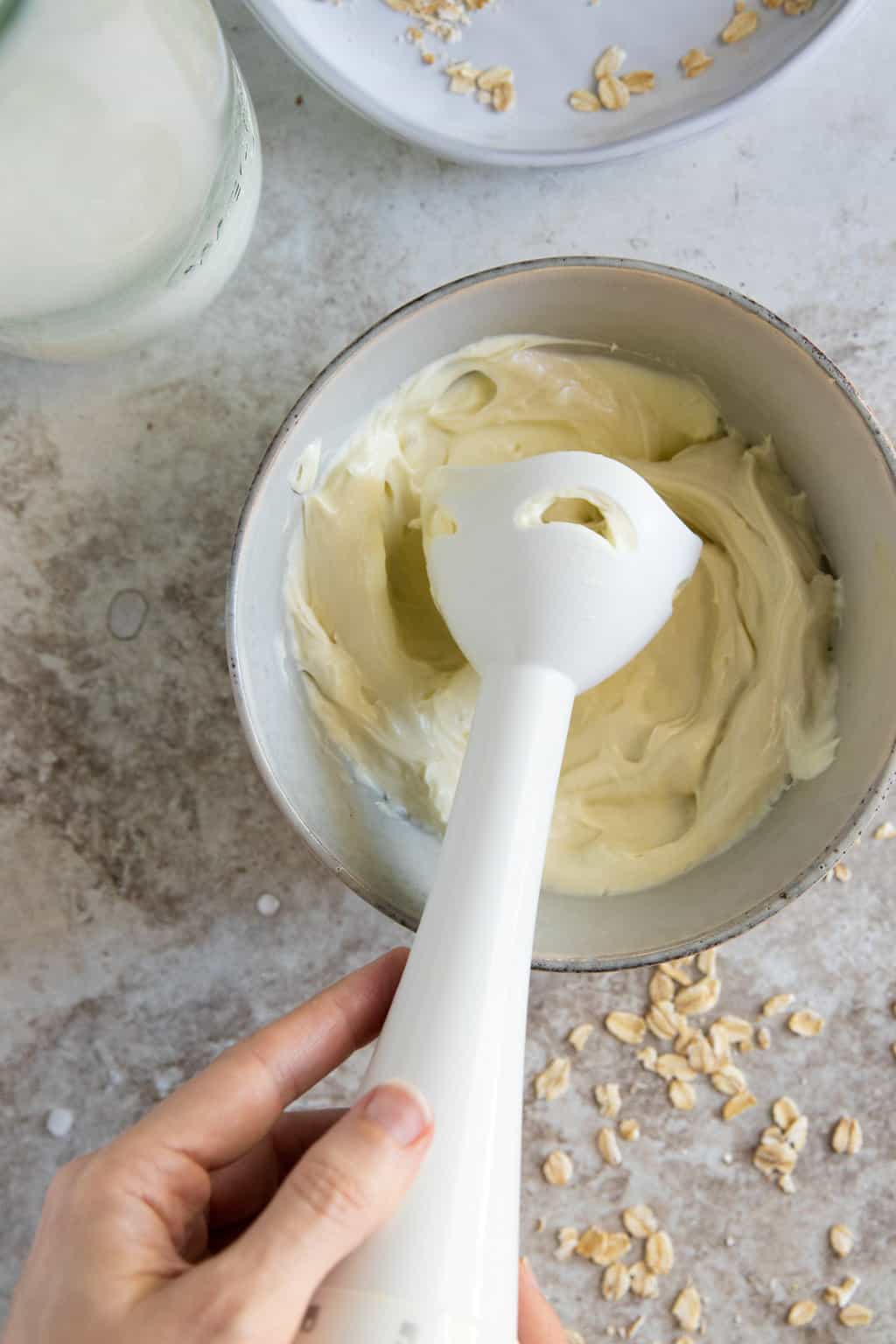
Step 3 | Blend with immersion blender
Using an immersion blender, whip the liquid ingredients until they start to come together and thicken. This will take about 1–2 minutes.
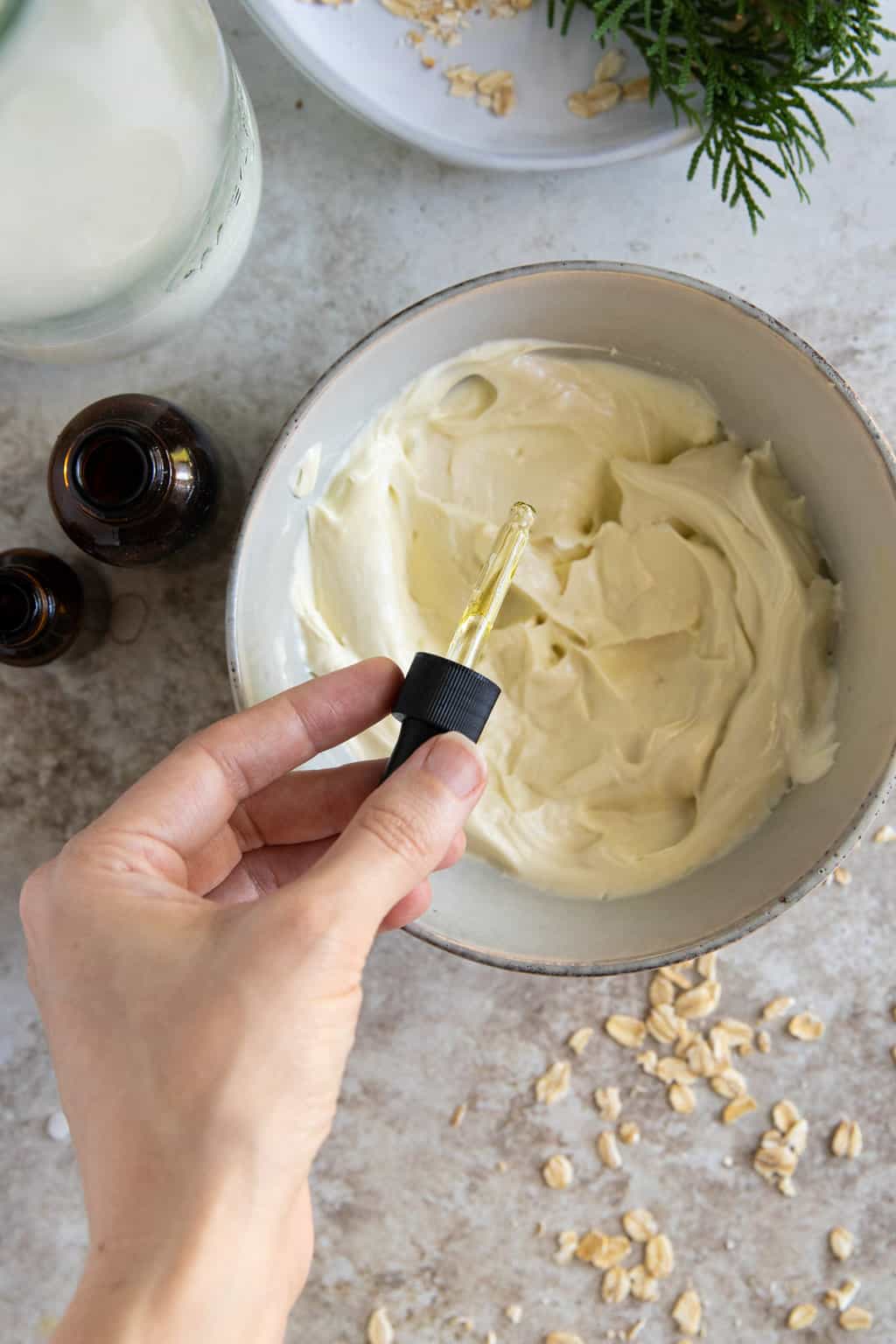
Step 4 | Add essential oils and preservative
When it starts to take on a lotion-like consistency, stir in your essential oils and preservative. Scoop into a clean, lidded jar.
Tip: To help speed things along, place the bowl in an ice bath while blending. Once you’ve mastered the basics, you’re free to add anything you like—water or oil-based—to your lotion.
Substitutions
Butters — For a richer lotion, you could switch out part of the olive oil for an equal amount of shea butter or cocoa butter.
Essential oils — Frankincense is excellent for repairing skin, while Roman chamomile soothes skin inflammation. You could also use lavender or tea tree oil.
Oatmeal lotion for itchy skin and eczema — use these eczema-soothing essential oils.
To make your own custom lotion in a blender, check out this post.
Usage
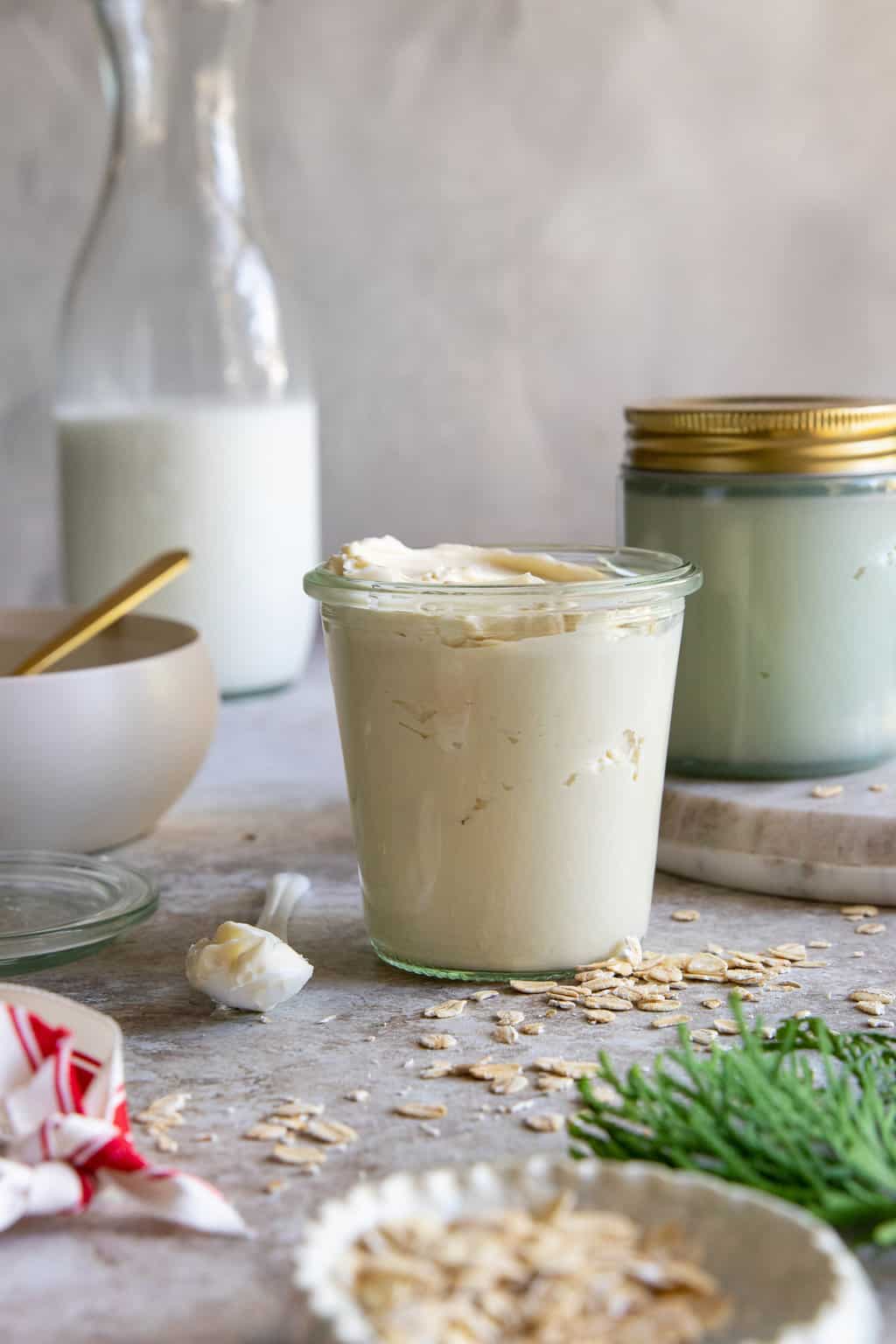
Smooth DIY oatmeal lotion all over your body, especially after showering or washing your hands, to lock in moisture. Take extra care with your dry areas.
It’s perfect for face, body, or anywhere else you might need some TLC—but don’t stop there. Go ahead and use it on dry hair, chapped cuticles, chapped lips, or practically anything. It’s so versatile and simple you’ll wonder why you haven’t been making your own all along.
Storage
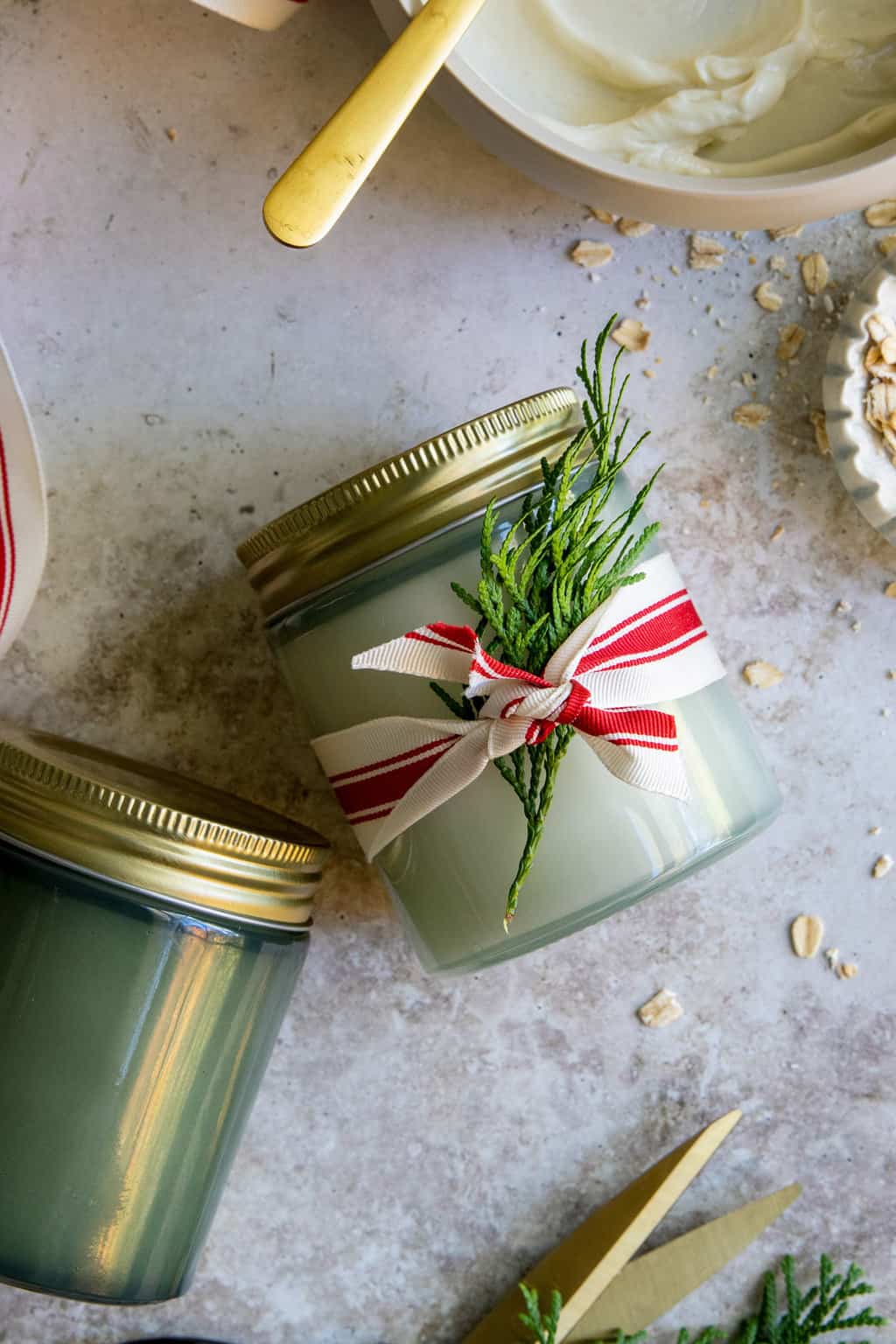
If you have any left over, this lotion with oatmeal makes awesome holiday gifts. Spoon it into a pretty jar, then add some ribbon and a tag. A great last-minute Christmas present your friends and family will be glad to have!
FAQ
Because homemade lotion is usually made from all-natural oils and butters, it’s going to feel greasier than the store-bought stuff. If you’re worried about the oils staining your clothes, try applying it at night before going to bed. Or just let it sink in for a few minutes before getting dressed.
If the greasy feeling is a deal breaker, you can add 1 to 2 teaspoons of cornstarch just before blending the ingredients. Cornstarch helps absorb some of the oil, making it feel drier.
A homemade lotion that consists of just oil-based ingredients doesn’t need a preservative. But if you include any water-based ingredients, then it definitely does. While vitamin E is touted as a natural preservative, you’ll need something much stronger to keep your lotion fresh. My favorite full-spectrum preservative is Leucidal Liquid SF.
Body lotion is typically much lighter than body cream because it contains less oil. If your skin needs more moisture than a lotion can provide, this is my favorite 2-ingredient body butter recipe.
Want more lotion ideas?
—Incorporate vitamin E for a DIY scar lotion.
—Use lavender hydrosol instead of oat milk in this homemade lotion.
—Use argan oil and rose for a super soothing body conditioner lotion.
—Make your own lotion with shimmer or bronzer for a subtle hint of color.
References
Bottone EJ, et al. Loofah sponges as reservoirs and vehicles in the transmission of potentially pathogenic bacterial species to human skin. J Clin Microbiol. 1994.
Ogunbiyi A. Pseudofolliculitis barbae; current treatment options. Clin Cosmet Investig Dermatol. 2019.Carson CF, et al. Melaleuca alternifolia (tea tree) oil: a review of antimicrobial and other medicinal properties. Clin Microbiol Rev. 2006.
Sánchez M, et al. Pharmacological update properties of Aloe vera and its major active constituents. Molecules. 2020.Maurer M, et al. The male beard hair and facial skin - challenges for shaving. Int J Cosmet Sci. 2016.
Gray J, et al. Pseudofolliculitis barbae: understanding the condition and the role of facial grooming. Int J Cosmet Sci. 2016.
